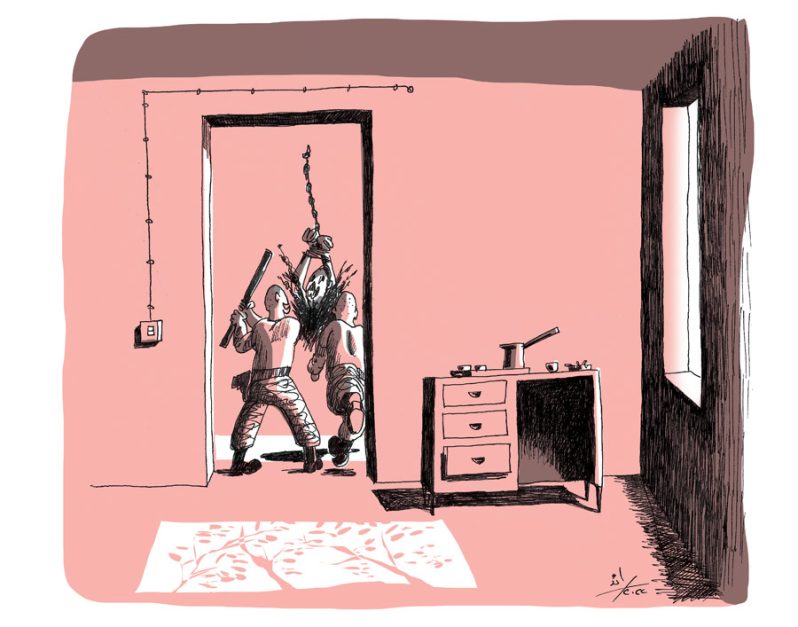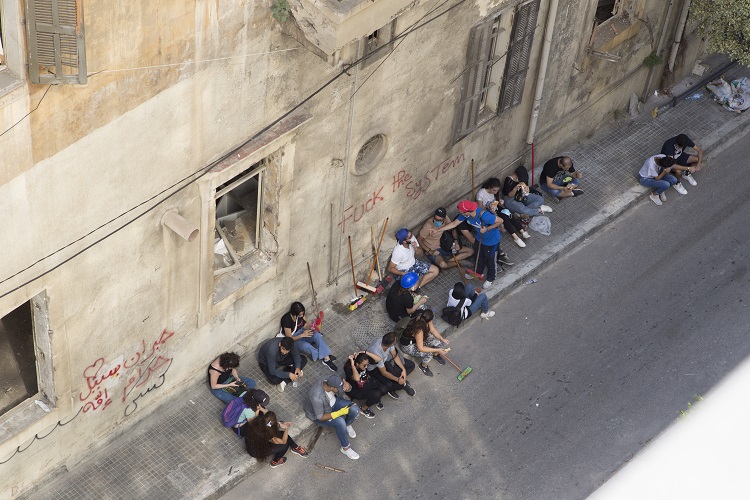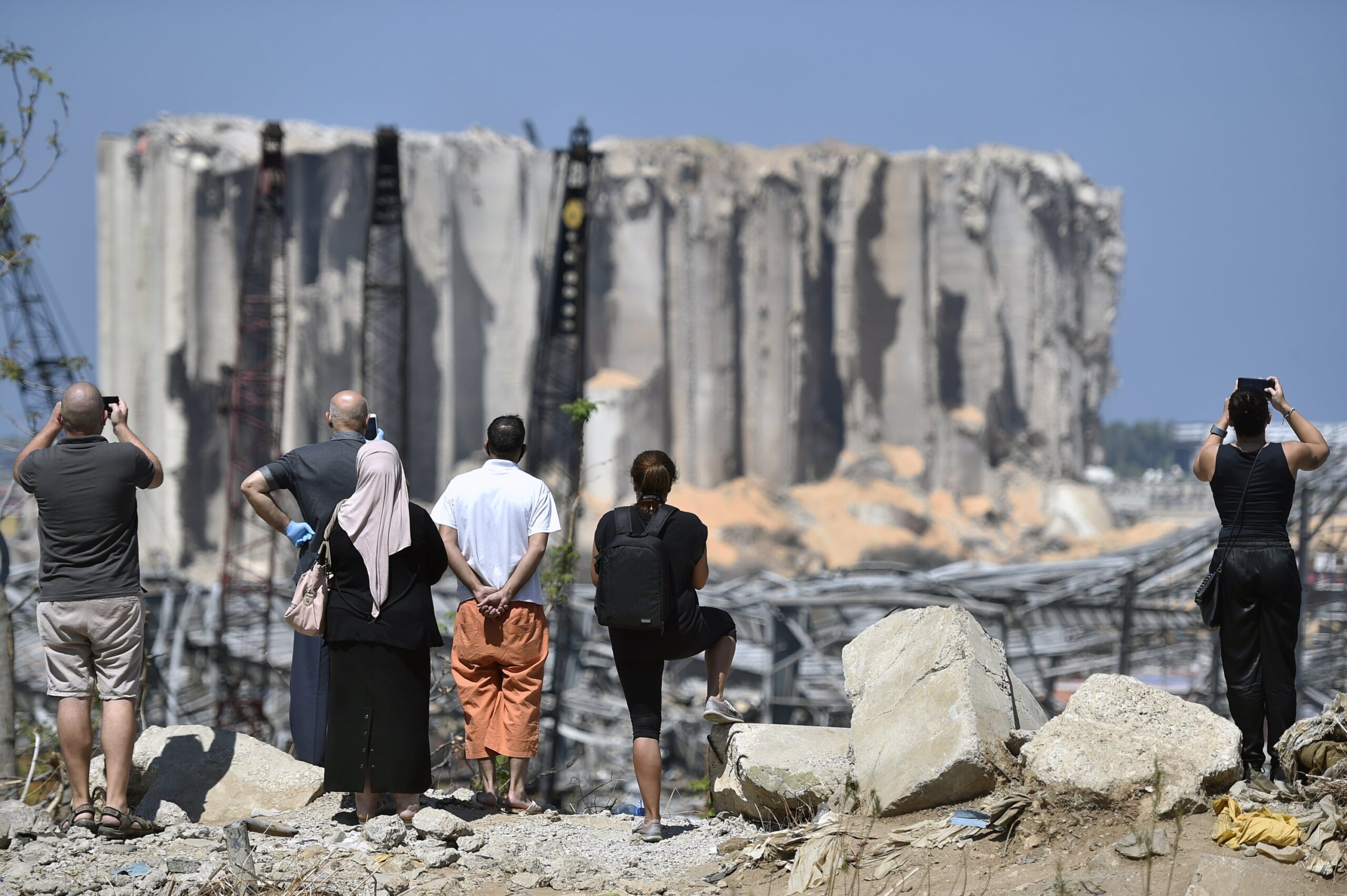Unidentified Graves in Algeria: A Heavy Legacy of the Civil War

The subject I address in this article may appear quite strange. It is not about a pit in a field or a well into which dead bodies have been thrown. Nor does it concern the digging of mass graves in which a group of bodies were buried on a largely anonymous basis. Rather, the case of these unidentified graves concerns a group of individual graves in cemeteries. These graves are located in officially-designated, ordinary cemeteries (e.g., El Alia Cemetery in Algiers), but they bear no indicators that allow the identification of the person buried inside them.
Are Unidentified Graves Unique to Algeria?
Unidentified graves can be found in a number of countries in connection with enforced disappearances. The most prominent example of such graves is in the state of Jammu–Kashmir in India, where an investigative team of police documented the presence of 2,700 graves in a number of areas in the north of the state, to which Pakistan lays claim.[2]
The team’s report pointed to the high likelihood that these were the graves of victims of enforced disappearances. One may conclude that the issue of unidentified graves is not unique to Algeria, though this does not detract from the seriousness of the situation in Algeria. However, what is that situation, exactly?
How Many Unidentified Graves are There in Algeria?
The exact number of unidentified graves [in Algeria] remains unknown. The statistics that have been circulated come from Farouk Ksentini, president of the National Advisory Commission for the Promotion and Protection of Human Rights (CNCPPDH). These numbers do not show up in the official speeches and reports of the Commission, which Ksentini has headed for many years. They have only been publicized in statements made to the press.
For example, in an interview with journalist Farid Alilat in the magazine Jeune Afrique on April 10, 2005, titled “Farouk Ksentini: Responsible, but not Guilty”, Ksentini estimated that 3,000 people were buried in unidentified graves in Algerian cemeteries.[3] On April 13, 2005, in the newspaper Le Quotidien d’Oran, he mentioned 3,300 unidentified graves in Algerian cemeteries. On the same day, the same figure appears in the daily newspaper L’expression in the following phrase: “Ksentini has announced the terrible discovery of 3,300 graves of unknown persons. The discovery is thanks to the efforts of the National Advisory Commission for the Promotion and Protection of Human Rights, of which he is president”.[4]
From this, we might understand that the discovery of these graves is due to this Commission, through some special mechanism for determining the fate of the disappeared. It might prompt us to believe that nobody knew about the existence of these graves before this [discovery was made], and that it was a previously unknown phenomenon.
However, this conclusion would be incorrect. It seems that the majority, but not all, of unidentified graves in Algerian cemeteries are in the capital Algiers, in particular in the El Alia Cemetery. There are also many of them in Constantine, and perhaps in Oran and other Algerian cities as well.
Who is Buried in Unidentified Graves?
In principle, it is impossible for us to know the names of those buried in unidentified graves. But the beginning of the answer lies in knowing that the phenomenon of these unidentified graves began in 1992, and appears to have grown starting in 1994. Thus, there is a link between graves of these unknown persons and what some Algerians prefer not to call the civil war.
However, to which category of civil war victims do the individuals buried in these graves belong? (Of course, it is not possible to reduce people to categories; I speak of categories here for the sake of simplification). Were these militants killed in battle? Were they the victims of armed violence? Were they the victims of enforced disappearances – that is, those who were detained by the security apparatus either at home, in the street, or at work, and of whom there has been no new information since that time? Did the security apparatus cause their disappearance and deny that they had been detained?
To answer these questions, one must return to Ksentini’s statements. Ksentini submitted a report to the Algerian president on March 31, 2005, about the fates of missing persons, which was followed by a number of other statements. On April 12, 2005, he took part in a forum organized by the daily newspaper Al-Yawm. The next day, the daily newspaper L’expression reported what Ksentini had said, with the headline: “Farouk Ksentini Announced Yesterday: 3,300 Individuals Buried Anonymously” with the sub-headline, “There is No Doubt that All Unidentified Graves Were of Victims of Terrorism”.[5] Writing about Ksentini’s statement, journalist Améziane Mokrane wrote: “in presenting this figure, Mr. Ksentini explains that it represents a number of individuals who were unknown until now. They were found buried in pits whose discovery was made possible, he said, as a result of ‘discussions with several repentant terrorists’”.
If this excerpt is unclear, the article explains that in the case of the buried individuals whose identities were not identified, “it is certain that, according to the guest forum in Al-Yawm, all of these unidentified graves belong to victims of terrorism, and that it is not possible in any way to confuse them with the category of missing persons”.
According to this report, the individuals who were buried anonymously were the victims of terrorism, and up until now, their bodies have been in pits whose location has been reported by “repentant” terrorists; it was because the authorities were unable to identify the buried and notify the families that they were buried as unknowns.
Just days before this –on April 10, 2005, to be precise– Ksentini had stated something entirely different in an interview with journalist Farid Alilat with the weekly Jeune Afrique. In that interview, Ksentini discussed the theory of “responsible but not guilty”. The following exchange took place:
Jeune Afrique: So, the families of the disappeared will not obtain their relatives’ remains, nor will they ever know the names of those who are guilty?
Ksentini: Regarding the bodies, 3,000 of them were buried anonymously. We could seek to identify the remains through DNA, but this process will require a lot of time and cost a lot of money.[6]
According to this alternate version, those who were buried in these graves were not victims of terrorism, but rather missing persons. In this case, how can we interpret their burial in unidentified graves, and the concealment of their identities? In the forum in Al-Yawm, Ksentini referred to something that might help explain this matter: “Between 1992 and 1996, approximately 500,000 Algerians were summoned by the security apparatus for matters relating to terrorism. From among these, 6,146 people never appeared before the judiciary.”
In an interview with Jeune Afrique, he made clear that “those who carried out the summons were not the same as those who ‘dealt’ with the individuals who were accused and subsequently disappeared. Nobody has seen those who were guilty”. According to this narrative, it was victims of enforced disappearance who were buried anonymously.
Consequently, we find ourselves facing the following question: the version in which the unknown buried individuals were victims of terrorism rests on Ksentini’s statement that the authorities buried them. However, in the version in which these bodies were those of missing persons, he does not clarify how or why they were buried in this way; he claims instead that nobody saw who the guilty parties were. Is the reference then to individuals who were detained and died under torture? Is Ksentini hinting that the security apparatus is responsible for their deaths, and concealed their remains? In principle, the authorities know which individuals disappeared anonymously. If so, what is the meaning of the expression “responsible but not guilty”? It appears as though they are describing the situation in such a way out of a desire to provide immunity to torturers, and to protect those who are responsible from extrajudicial retribution.
Moreover, according to the legal narrative in the CNCPPDHs reports, and in the document referred to as the Charter for Peace and National Reconciliation (adopted in 2005), those responsible for enforced disappearances were agents of the state acting individually and outside of the leadership structure. If this is the case, then the logical outcome is that these burials occurred in a clandestine manner. However, it is hard to believe that thousands of anonymous burials in official cemeteries were secretly executed by undisciplined agents, and without alerting cemetery authorities, local authorities (municipal, regional, or provincial councils), or security forces. Thus, even if there were no official policy on enforced disappearances, the presence of unidentified graves nevertheless constitutes evidence that there was an official policy for eliminating the remains of the disappeared, which is no less serious a matter. What I wish to say is that it is difficult to accept the fact that these graves were truly anonymous. If security forces knew who was arrested, then they know perfectly well who died under torture, who was executed, and who buried them anonymously.
The Identities of the Disappeared in Unidentified Graves is Not Actually Unknown
In reality, these graves are not anonymous to everyone. The [Algerian] people at large may not know who is buried inside, but that is not the case as far as some state authorities are concerned. The evidence for this lies in the fact that some families of victims of enforced disappearances have been able to learn that their relatives were buried anonymously in El Alia Cemetery in Algiers; they have requested that the bodies be exhumed for DNA testing. All this confirms that an anonymous burial might have been carried out in an organized fashion. It also demonstrates that the investigations undertaken by the security apparatus in line with procedures of compensating the families of the disappeared as articulated by the Charter for Peace and National Reconciliation, are, to put it mildly, being conducted in an off-the-cuff manner.
It is well-known that in order to obtain compensation from the state, families of missing individuals must request a judicial order declaring the death of a disappeared person. In order to obtain such an order, the request must start with a document of disappearance from the security apparatus. The police or the gendarmes hand over this document after they conduct investigations into cases of disappeared persons that yield no results – that is, when they cannot be found dead or alive. However, we can see that these investigations have not gotten close to the issue of these unidentified graves, although their existence is no secret either to the security apparatus, nor to the families, nor to the [Algerian] people more generally.
One woman who belongs to the association SOS Disparus, and whose brother disappeared, managed to obtain a document of disappearance from the police for her family. After conducting her own investigation, she managed to identify the burial place of her brother in an unidentified grave. She obtained this information after the cemetery’s administration permitted her to review the registry of names of the buried. After this, the sister of the disappeared person managed to learn that her brother’s death had also been registered in the civil status records since the mid-nineties, several months after his enforced disappearance. This is a strange situation: the name of a forcibly disappeared individual was registered in an official record, and then he was buried in an unidentified grave. Even if we suppose that the dead were unknown [at the time], it is still, in fact, possible to learn the identities of those who were buried anonymously.
Persons Buried Anonymously can be Identified
According to the official story, which it appears that the CNCPPDH has taken it upon itself to circulate, the state is responsible but not guilty, and that those responsible were “rogue agents” and the like. This story also holds that it is impossible to identify those responsible, because the records have disappeared – as though the only way to establish a criminal case is through records.
Initially, upon reading the first annual report of the CNCPPDH, it seemed that the gendarmerie had a list of missing persons.[7] Later it seemed likely that the names of those who had been buried anonymously had in fact been recorded in cemetery registries, based on the general experiences of the families of the missing who had sufficient credible reasons to believe that their relatives had been anonymously buried in these cemeteries.
Even Ksentini acknowledges that the buried individuals could be identified through DNA analyses, but it seems that this method will not be relied upon because it requires so much time and money. Conducting DNA testing would require two necessary procedures: first, the exhumation of the bodies, which would require the approval of the authorities; and, second, the establishment of a DNA database, preferably on a voluntary basis. Such a database could include the families of victims of enforced disappearance, along with the families of anyone missing from the civil war who has not yet been found. That would include families of people who disappeared because of terrorist acts, and those whose fates are still unknown.
Prior to discussing questions of procedure, however, we are faced with a legal question: does the Charter for Peace and National Reconciliation and its provisions dealing with implementation prohibit these DNA analyses, and the exhumation of bodies from unidentified graves? There is no indicator in these regulations that officially prohibits exhuming the bodies or conducting DNA tests, so long as the request to recover the bodies does not fall within the context of a complaint raised against any member of the armed forces. The latter enjoy immunity, as granted to them by Article 45 of Decree 01–06, dated February 27, 2006, which also includes the implementation of the Charter. One might say that in certain cases, this procedure actually stems from the decree, because it involves providing a document of disappearance via conducting investigations into the disappeared through all possible legal means. However, given the nature of the situation, when we put the question forward from a political perspective, rather than a technical/legal one, it becomes quickly apparent that the authorities’ political desires lean in the direction of maintaining the status quo.
It is possible that exhumation procedures and DNA testing could lead to the identification of a significant number of victims of enforced disappearance. However, contrary to what the Charter suggests, and based on compensation procedures for the families of missing persons in the framework of the national reconciliation policy, the authorities do not recognize the enforced nature of disappearances, and there are no particular statutes for them to be found in current laws. If one reads the Charter and its implementing regulations closely, and examines the reports that the government has sent to the United Nations Committee on Enforced Disappearances, one notices that the authorities never acknowledge that they have detained missing persons, or that state apparatuses were behind their disappearances – even in cases wherein the missing persons are considered terrorists.
We are facing arrogant injustice, because in a very specific way, these unidentified graves are perpetuating fear of oppression on a large scale. This is at a time when the authorities have concluded political agreements with those who were once the armed enemies of the regime. Not only have they been forgiven, but they now enjoy all their civil rights. The regime considers them to be respected interlocutors, and even allows them to organize summer courses in the universities with no fear that they will be banned. We are witnessing how the families of missing persons as well as the victims of terrorism have been abandoned on the path towards national reconciliation.
This article is an edited translation from Arabic.
__________
[1] This article was an address delivered in French at a seminar that was held on January 17, 2015 in Algiers, titled “Blurring the Truth in Algiers: Unidentified Graves, Mass Burial Sites, and the Refusal to Implement the Recommendations of the Human Rights Committee”. The seminar was organized by the Algerian association SOS Disparus, which the state has refused to recognize or register since 2000.
[2] Statement issued by Amnesty International on August 22, 2011.
[3] See: Jeune Afrique’s, “Farouk Ksentini: Responsable mais pas coupable”, April 10, 2005.
[4] See: “Farouk Ksentini l’a révélé hier: «3300 personnes enterrées sous X»”, L’expression, April 13, 2005.
[5] Ibid.
[6] See note 3 above, ibid.
[7] CNCPPDH 2007, Etat des droits de l'Homme en Algérie: Rapport annuel, 2007, p. 103.



